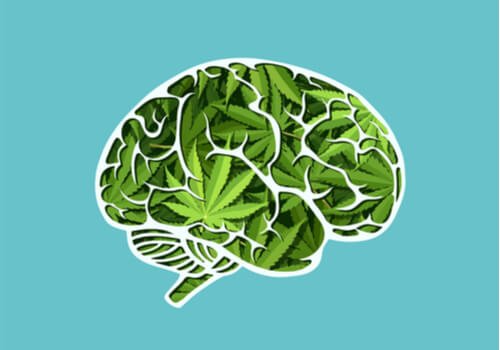Cannabinoid hyperemesis is a rare syndrome that occurs among regular cannabis users. Allen et al were the first to describe it in 2004. It’s characterized by recurrent episodes of nausea, vomiting, and abdominal pain.
The vomiting usually lasts between two and four days and doesn’t respond to the usual treatment with antiemetics. On the other hand, hot baths do alleviate the symptoms of most patients. However, these only disappear completely with the cessation of cannabis use.
Because cannabinoid hyperemesis syndrome is an extremely rare condition, it often takes time for people to be properly diagnosed. In fact, it’s estimated that, on average, just over six years passes from the onset of symptoms to correct diagnosis.
What causes cannabinoid hyperemesis syndrome?
Cannabis contains different substances. One of the best known is tetrahydrocannabinol, also known as THC. In fact, this is the substance most responsible for the psychoactive effects of the drug. THC works by modifying neural receptors in the brain. In addition, it also affects other bodily systems like circulation and respiration. However, these aren’t the only areas to be affected.
In the short term, the consumption of THC acts on the digestive system and can cause dry mouth or increased appetite. Furthermore, its consumption helps prevent nausea and vomiting that occurs, for example, in many patients undergoing chemotherapy treatment.
However, continued use of cannabis can cause certain receptors in the brain to stop responding to the drug in the same way. Therefore, it could be that excess consumption causes precisely the opposite effect. Nevertheless, this is only a hypothesis.
Because cannabinoid hyperemesis is such a rare syndrome, its exact etiology and pathophysiology are currently unknown to researchers. Therefore, there’s still no definitive answer as to why it occurs in some users and not in others.
Main symptoms of cannabinoid hyperemesis
Cannabinoid hyperemesis manifests itself differently depending on its specific phase. For example, the first phase is called prodromal. In this stage, sufferers experience morning sickness and abdominal pain. However, this period can go on for months and even years.
The second phase is the most acute and often requires hospitalization. This is the hyperemetic phase. It’s characterized by the following symptoms:
- Constant nausea.
- Repeated vomiting.
- Upset and abdominal pain.
- Reduction of food intake.
- Weight loss.
- Dehydration.
The third stage is called the recovery phase. In this phase, the acute symptoms disappear and the sufferer gradually returns to their normal weight. However, if they resume using cannabis, the symptoms of the hyperemetic phase are likely to return.
The main treatments
The most effective treatment to reduce the symptoms of cannabinoid hyperemesis is to stop using cannabis. Even so, it still might be possible that the person needs to be hospitalized. That depends on the severity of each individual case. Hospitalization is more likely in the hyperemetic phase. These are the most commonly administered treatments:
- Repeated hot showers or baths throughout the day.
- Antiemetics to reduce vomiting.
- Analgesics to reduce pain.
- Intravenous hydration.
- Proton pump inhibitors to decrease stomach inflammation.
- Administration of benzodiazepines.
- Administration of Haloperidol.
- Topical capsaicin-based ointment on the torso.
- Initiation of a rehabilitation program for cannabis use.

What can be done to prevent cannabinoid hyperemesis?
The best prevention for this syndrome is, as mentioned earlier, not to consume any type of substance that contains cannabis. Indeed, in most cases, it’s only by avoiding consumption completely that optimal prevention or recovery of symptoms will be possible.
The problem is that the continued use of cannabis impairs correct decision-making. Furthermore, given their addiction, individuals tend to continue to use the substance. Consequently, on many occasions the condition becomes chronic.
Scientists have studied the harmful effects of cannabis use for decades. Decision-making difficulty is one such effect. However, cognitive decline, decreased performance, impulsivity, and a predisposition to manifest a psychotic disorder are some of the other many side effects of cannabis use.
Obviously, to avoid any complications, the best option is to avoid consumption. In this way, not only will most of the symptoms cease, but the person will also improve in other crucial aspects of their health. However, if an individual experiences difficulties in the use of cannabis, they should consider consulting an addiction specialist expert. They’ll be able to suggest the most appropriate rehabilitation program.
The post Cannabinoid Hyperemesis Syndrome: What is it? appeared first on Exploring your mind.













Comments